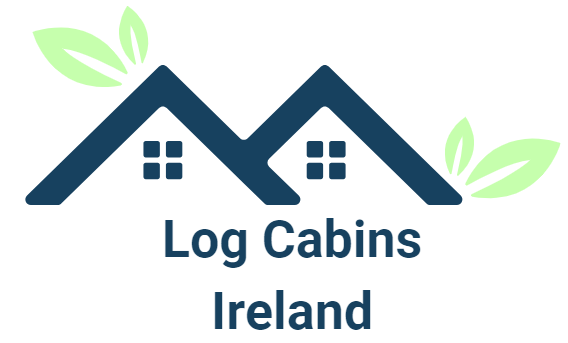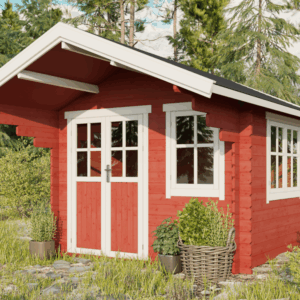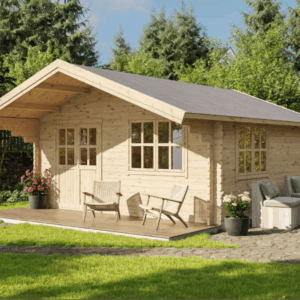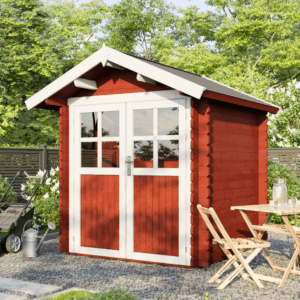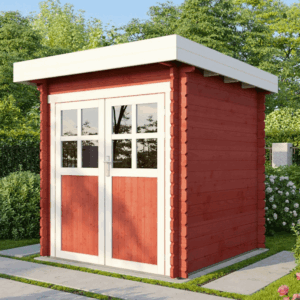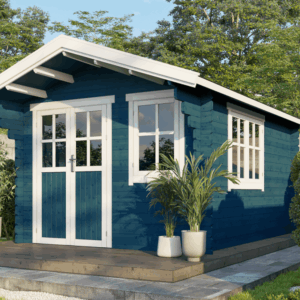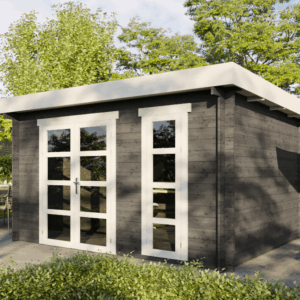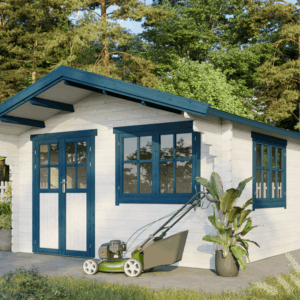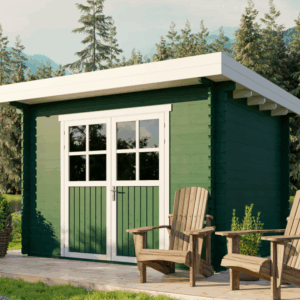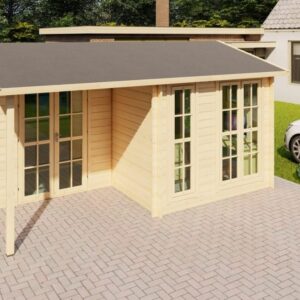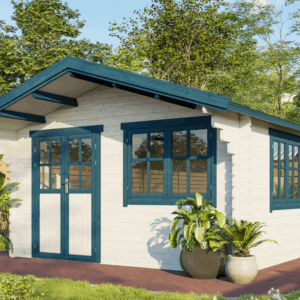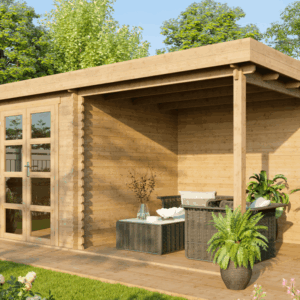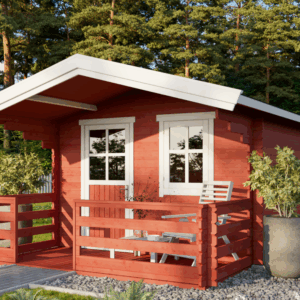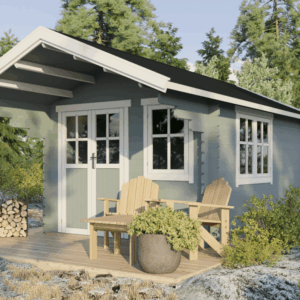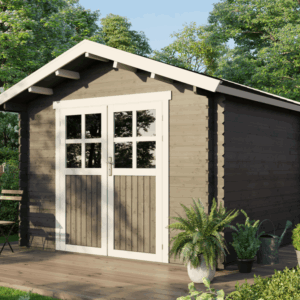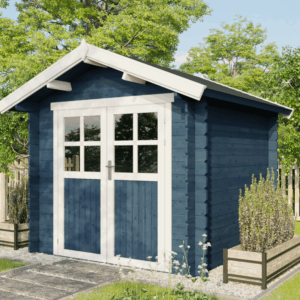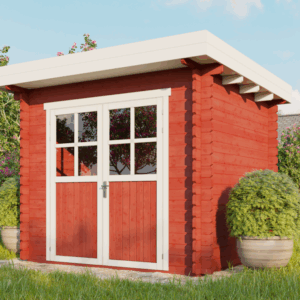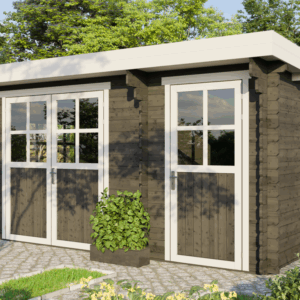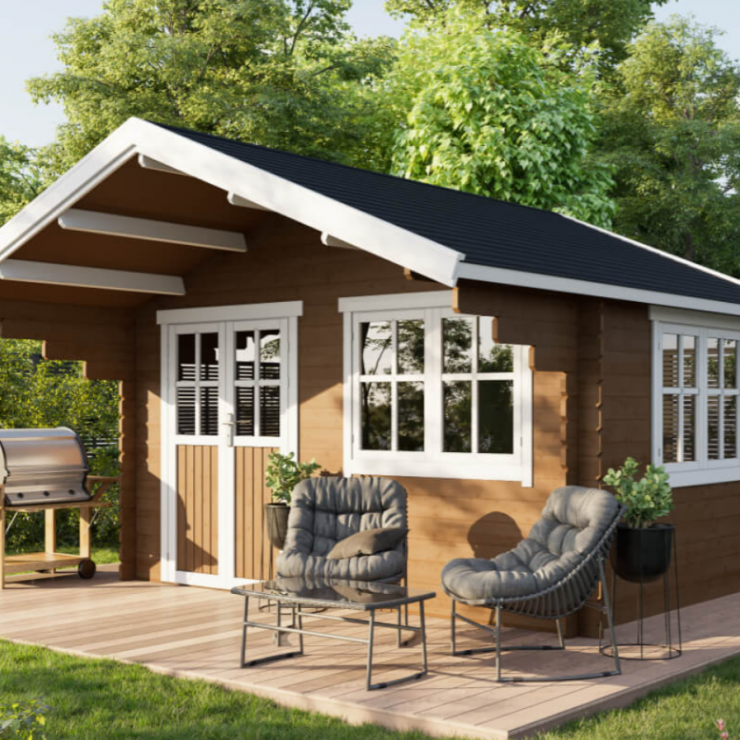Imagine waking up to the scent of pine, the warmth of a crackling fire, and the undeniable charm of rustic living, all within the vibrant heart of Ireland’s bustling capital. While the image of a secluded log cabin nestled amidst rolling hills might first spring to mind, the allure of a log cabin experience is increasingly finding its way into unexpected urban landscapes. This guide explores the burgeoning appeal and practicalities of finding or creating a log cabin sanctuary within or on the fringes of Dublin City, blending natural aesthetics with modern convenience.
Dublin, a city steeped in history and pulsating with contemporary energy, offers a unique backdrop for those seeking a different kind of dwelling. For many, the dream of a log cabin represents a connection to nature, a desire for a more sustainable lifestyle, or simply an appreciation for unique architectural beauty. This post aims to demystify the concept of log cabins in the Dublin context, whether you’re considering a holiday home, a permanent residence, or even a unique glamping experience.
The notion of “log cabins Dublin City” might seem like a contradiction to some, conjuring images of dense forests and remote wilderness. However, the modern interpretation of log cabins extends far beyond these traditional perceptions, embracing innovative designs and adaptable construction methods that can integrate seamlessly into diverse environments. We’ll explore how this rustic aesthetic is being embraced and how you can be part of this growing trend.
The Unique Appeal of Log Cabins in an Urban Setting
The primary draw of a log cabin, regardless of its location, lies in its inherent warmth and inviting atmosphere. The natural beauty of timber, coupled with the distinctive scent and tactile qualities of wood, creates a sense of coziness and tranquility that is difficult to replicate. This rustic elegance offers a welcome respite from the concrete and steel that often characterize urban living, providing a grounding and elemental connection for its inhabitants.
Furthermore, log cabins often symbolize a commitment to a more sustainable and eco-friendly lifestyle. Many log homes are constructed using responsibly sourced timber, and their natural insulating properties can contribute to reduced energy consumption. This aligns perfectly with the growing global awareness and demand for greener living solutions, making log cabin living an increasingly attractive option for environmentally conscious individuals in Dublin.
Beyond the aesthetic and environmental benefits, log cabins offer a unique sense of character and individuality. Unlike mass-produced housing, each log cabin can possess its own distinct personality, reflecting the craftsmanship and personal choices of its owner. This individuality is a refreshing contrast to the uniformity that can sometimes be found in more conventional urban developments.
Exploring Log Cabin Options in and Around Dublin City
When we speak of “log cabins Dublin City,” it’s important to understand the various forms this can take. While a full-scale, traditional log home within the immediate city center might be rare, the concept is being realized in several innovative ways. These include bespoke-built homes on the outskirts, pre-fabricated log cabin kits, and even stylish glamping pods offering a short-term log cabin experience.
For those seeking a more permanent solution, venturing slightly outside the immediate Dublin urban sprawl opens up possibilities for acquiring land and constructing a custom log home. Areas in County Dublin and neighboring counties like Wicklow and Meath offer more space and a closer proximity to natural landscapes, yet remain within a commutable distance to the city. This allows for a harmonious blend of rural tranquility and urban accessibility.
Alternatively, the rise of the pre-fabricated log cabin market provides a more accessible entry point for those with limited land or budget. These kits can be erected relatively quickly and offer a cost-effective way to achieve the log cabin aesthetic. Some companies specialize in delivering and assembling these structures, making the process more straightforward for potential owners.
The Practicalities of Owning a Log Cabin in Ireland
Before embarking on your log cabin journey in Dublin, understanding the practical considerations is crucial. This includes navigating planning permission, understanding building regulations, and considering the specific maintenance requirements of a timber structure in the Irish climate. Engaging with experienced professionals from the outset will ensure a smoother and more successful build.
Obtaining planning permission for any new dwelling in Ireland can be a complex process, and log cabins are no exception. Local authorities will assess the proposed build against zoning laws, environmental impact, and aesthetic considerations. It is highly recommended to consult with a local architect or planning consultant who is familiar with the specific requirements for log homes in the Dublin region.
The Irish climate, with its varying levels of humidity and rainfall, necessitates a robust approach to timber treatment and construction. Proper sealing, regular inspections, and appropriate timber preservatives are essential to protect your log cabin from moisture damage and ensure its longevity. Seeking advice from builders experienced in timber construction in Ireland is paramount to addressing these climatic challenges effectively.
Planning Permission for Log Cabins in Dublin
Navigating the planning permission process for a log cabin in Dublin requires careful preparation and a clear understanding of local council guidelines. You’ll need to demonstrate how your proposed cabin aligns with the area’s character and existing development. Detailed architectural plans, site surveys, and environmental impact assessments are often part of the submission.
The key to a successful planning application often lies in showcasing how your log cabin will be a sustainable and aesthetically pleasing addition to the chosen location. Highlight the use of natural materials and any eco-friendly features you intend to incorporate. Consulting with local planning authorities early in the process can provide valuable insights and prevent potential pitfalls.
Consider the suitability of your chosen site for a log cabin. Factors such as drainage, access, and the proximity of existing services will be examined. A well-researched and thoughtfully presented application will significantly increase your chances of approval, allowing you to move forward with your dream build.
Building Regulations and Log Cabin Construction
Adhering to Irish building regulations is non-negotiable for any new construction, and log cabins must meet the same stringent standards as traditional homes. This includes regulations related to structural integrity, fire safety, insulation, ventilation, and energy efficiency. Ensuring your log cabin is built to code will guarantee safety, comfort, and compliance.
When selecting a log cabin construction method, whether it’s solid logs, log kits, or timber frame with log cladding, ensure the chosen method complies with all relevant building codes. Reputable suppliers and builders will be well-versed in these regulations and can guide you through the process, providing the necessary certifications.
The insulating properties of logs are excellent, but additional measures may be required to meet current energy performance targets. Discuss with your builder how to best achieve these targets through appropriate insulation strategies and ventilation systems, ensuring your log cabin is both warm and energy-efficient throughout the year.
Log Cabin Styles and Design in a Dublin Context
The beauty of log cabins lies in their versatility, allowing for a wide range of styles that can be adapted to suit various preferences and settings. From classic rustic designs to more contemporary interpretations, the possibilities are extensive, even within the urban environment of Dublin.
A classic log cabin evokes images of sturdy, handcrafted timber walls, a pitched roof, and perhaps a charming porch. This style embodies a timeless appeal and a strong connection to nature. For a Dublin location, such a cabin could be designed to blend harmoniously with a more established garden setting or a semi-rural plot.
More contemporary log cabin designs often incorporate sleeker lines, larger windows to maximize natural light, and a fusion of timber with other modern materials like glass and steel. These designs can offer a sophisticated take on rustic living, proving that log cabins are not confined to traditional aesthetics and can be adapted to modern architectural trends.
Modern Log Cabin Designs for Urban Living
The evolution of log cabin construction has led to sophisticated designs that seamlessly integrate into contemporary living. Modern log cabins can feature expansive glazing, open-plan living spaces, and innovative rooflines, all while retaining the warmth and character of natural timber. These designs often prioritize natural light and a connection to the surrounding environment.
Consider incorporating large panoramic windows that frame views of your garden or the surrounding landscape, blurring the lines between indoor and outdoor living. This approach is particularly effective in urban settings where maximizing natural light and creating a sense of openness is highly valued.
For a truly bespoke modern log cabin, consider working with an architect who specializes in sustainable and natural building materials. They can help you create a unique dwelling that meets your aesthetic desires and functional needs, ensuring your log cabin is a statement piece in the Dublin landscape.
Sustainable and Eco-Friendly Log Cabin Features
Embracing sustainability is a key aspect of modern log cabin living, and Dublin offers a fertile ground for exploring eco-friendly solutions. From the sourcing of materials to energy efficiency, there are numerous ways to make your log cabin as green as possible.
Prioritizing responsibly sourced timber, such as FSC-certified wood, is a fundamental step towards an eco-friendly log cabin. Investigate local suppliers who can provide sustainably harvested materials, ensuring your construction has a minimal environmental footprint.
Beyond the timber itself, consider incorporating renewable energy sources like solar panels or geothermal heating systems. Green roofs can also enhance insulation and provide ecological benefits, contributing to a truly sustainable dwelling that complements the natural ethos of log cabin living.
The Rise of Glamping and Log Cabin Experiences in Dublin
For those not ready to commit to a full-time log cabin residence, the burgeoning glamping industry in and around Dublin offers an excellent opportunity to experience the charm of a log cabin without the long-term investment. These stylish, often luxurious, accommodations provide a taste of rustic living in picturesque settings.
Glamping sites featuring log cabins or log-style pods are becoming increasingly popular in the Dublin region, offering a unique alternative to traditional hotel stays. These sites are often located in scenic areas, providing a peaceful retreat that is still conveniently accessible to the city’s attractions.
Imagine a weekend getaway where you can enjoy the comforts of a well-appointed cabin, surrounded by nature, yet be a short drive from the vibrant cultural scene of Dublin. This blend of relaxation and adventure makes glamping log cabins an appealing option for tourists and locals alike seeking a memorable escape.
Finding Log Cabin Glamping Near Dublin City
Discovering the perfect log cabin glamping experience near Dublin is easier than you might think, with several charming options scattered across the surrounding countryside. These sites are designed to offer a comfortable and immersive nature experience, all within easy reach of the capital.
Search for glamping sites located in counties like Wicklow, Meath, and Kildare, which offer beautiful natural landscapes and are within a reasonable driving distance of Dublin. Many of these locations boast stunning views and tranquil settings, perfect for a relaxing break.
Look for accommodations described as log pods, cabins, or eco-lodges. These often come equipped with comfortable bedding, basic amenities, and sometimes even private cooking facilities, ensuring a cozy and self-sufficient stay. Booking in advance is often recommended, especially during peak tourist seasons.
Conclusion: Embracing the Log Cabin Dream in Dublin
The dream of owning a log cabin, once seemingly confined to remote wildernesses, is increasingly becoming a tangible reality within the vibrant landscape of Dublin City and its environs. From the enduring allure of natural materials and sustainable living to the growing availability of diverse housing and accommodation options, the concept of log cabins Dublin City offers a unique and compelling proposition.
Whether you envision a bespoke-built family home offering a serene escape from urban bustle, a cost-effective pre-fabricated dwelling, or a short-term rustic getaway through glamping, the possibilities are expanding. By understanding the practicalities of planning, building regulations, and the specific climatic considerations of Ireland, you can navigate this exciting journey with confidence.
Embrace the opportunity to bring a touch of rustic charm, natural beauty, and sustainable living into your life in the heart of Ireland. The log cabin experience in Dublin is more accessible and diverse than ever before, inviting you to create your own unique sanctuary amidst the energetic pulse of the capital.
“`
Looking for services in Dublin? You may also like: Flower Delivery 24 | Lough Shinny Crab | Turbines Ireland.
